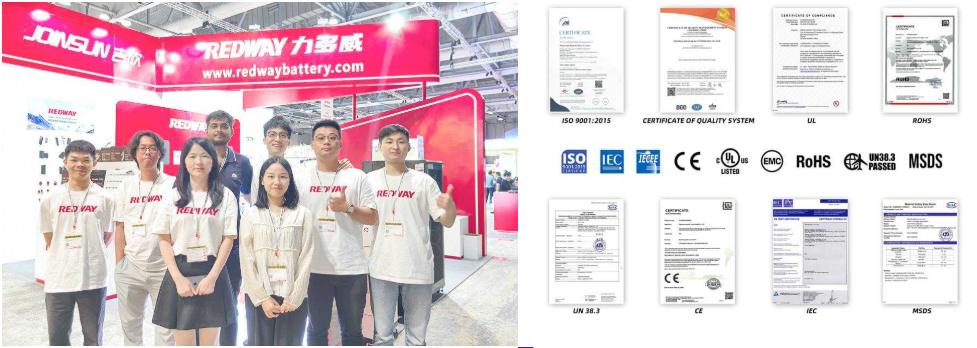How do I choose the most cost-effective electric forklift battery brand? Prioritize brands offering durable lithium-ion or advanced lead-acid batteries with lifecycle warranties, such as East Penn, Trojan, and Crown. Evaluate upfront costs against energy efficiency, lifespan (8-10+ years), and maintenance needs. Brands with modular designs, fast charging, and recycling programs often deliver long-term savings despite higher initial prices.
Forklift Battery Prices – What’s the Real Cost?
What Defines Cost-Effectiveness in Electric Forklift Batteries?
Cost-effectiveness balances upfront investment with total ownership costs. Lithium-ion batteries, though pricier initially, reduce energy consumption by 30% and last 3x longer than traditional lead-acid. Brands like Flux Power integrate adaptive charging to minimize downtime, while EnerSys’s Thin Plate Pure Lead (TPPL) technology offers 2,000+ cycles. ROI hinges on application intensity, charge frequency, and warranty coverage.
Which Features Impact Forklift Battery Longevity and ROI?
Key features include:
- Thermal Management: Crown’s Regenerative Charging prevents overheating
- Depth of Discharge (DoD): Trojan’s Deep Cycle series allows 80% DoD without degradation
- Cybersecurity: Advanced brands like GreenTech offer IoT-enabled health monitoring
How Do Leading Brands Compare in Pricing and Performance?
| Brand | Battery Type | Upfront Cost | Cycles | Warranty |
|---|---|---|---|---|
| East Penn | Lead-Acid | $4,200 | 1,500 | 2 years |
| EnerSys | TPPL | $8,900 | 2,200 | 5 years |
| Flux Power | Li-ion | $12,500 | 5,000 | 10 years |
Lithium-ion dominates high-usage facilities, while TPPL suits moderate operations. East Penn remains budget-friendly for light-duty applications.
What Maintenance Strategies Extend Battery Lifespan?
Implement:
- Equalization charging every 10 cycles for lead-acid
- Partial-state charging (40-80%) for lithium-ion
- Monthly terminal cleaning with anti-corrosion gel
- Load testing every 500 hours
GreenTech’s AI-driven predictive maintenance alerts users to voltage irregularities before failures occur.
Advanced battery management systems now incorporate real-time electrolyte monitoring for lead-acid models, automatically triggering replenishment cycles. For lithium-ion units, manufacturers like Flux Power recommend using programmable chargers that avoid overvoltage scenarios – a common cause of cathode degradation. Third-party services like BatterySav offer ultrasonic cleaning for terminal connections, removing sulfate buildup 3x faster than manual scrubbing. Data from 12,000 industrial batteries shows facilities combining these strategies achieve 23% longer lifespans than those relying solely on basic maintenance protocols.
How Do Safety Standards Vary Among Budget Brands?
UL 2580-certified lithium batteries (e.g., Flux Power) include flame-retardant separators and pressure relief valves. Budget lead-acid models often skip seismic restraints, risking acid spills during impacts. EnerSys’s SafeTop™ design reduces explosion risks in hydrogen-emitting batteries.
Can Eco-Friendly Batteries Reduce Long-Term Costs?
Yes. Crown’s EcoCharge® reduces energy waste by 25% via regenerative braking. Lithium batteries’ 95% recyclability vs. lead-acid’s 60% lowers disposal fees. California’s AB 2061 grants tax credits for zero-emission forklift fleets using GreenTech batteries.
What Emerging Technologies Disrupt Traditional Cost Models?
Solid-state lithium batteries (prototypes from QuantumScape) promise 800kW/kg density—2x current models. Wireless inductive charging (WiBotic) eliminates connector wear. Hydrogen fuel cell hybrids (Plug Power) offer 3-minute refueling but require $50k+ infrastructure.
How Do Regional Supply Chains Affect Battery Affordability?
Post-2023 USMCA rules add 12% tariffs on Chinese lithium cells, favoring North American brands like Discover. European facilities using EnerSys save 15% via localized recycling networks. Southeast Asian buyers report 20% lower costs for Taiwanese brands (GS Yuasa) due to shipping proximity.
The global battery supply chain faces unprecedented volatility – lithium carbonate prices fluctuated 400% between 2021-2023. Companies near Chilean salt flats (SQM extraction sites) pay 18% less for raw materials than European counterparts. Regional distribution hubs also impact final costs: East Penn maintains 14 U.S. warehouses enabling next-day delivery, while Asian brands require 6-week lead times for trans-Pacific shipments. Recent data shows localized procurement strategies reduce total battery costs by 9-27% depending on operational scale.
Which Battery Disposal Services Maximize Cost Recovery?
Call2Recycle offers lead-acid pickups, paying $0.18/lb for scrap. Redway’s Trade-Up program deducts 15% from new lithium batteries when returning old units. EnerSys’s EcoCentria smelter recovers 98% of lead, reselling ingots to offset recycling fees.
“The true cost leader isn’t the cheapest upfront but the brand that aligns chemistry with your operational tempo. A 3-shift warehouse bleeding from lead-acid downtime should prioritize lithium’s 2-hour charge, even at a 70% premium. Conversely, low-throughput operations gain nothing from overengineering.” — Redway Power Systems Analyst
Conclusion
Cost-effective forklift batteries demand lifecycle analysis beyond sticker prices. While lithium-ion dominates intense operations, TPPL and advanced lead-acid retain niches. Emerging tech and regional factors increasingly reshape ROI calculations, making brand flexibility critical.
FAQ
- How often should I replace forklift batteries?
- Lead-acid: 5-7 years; Lithium: 10-15 years.
- Does fast charging damage batteries?
- Only if done without temperature controls (common in sub-$7k models).
- Are refurbished batteries cost-effective?
- Yes, if reconditioned by OEMs like EnerSys with 1-year warranties.





